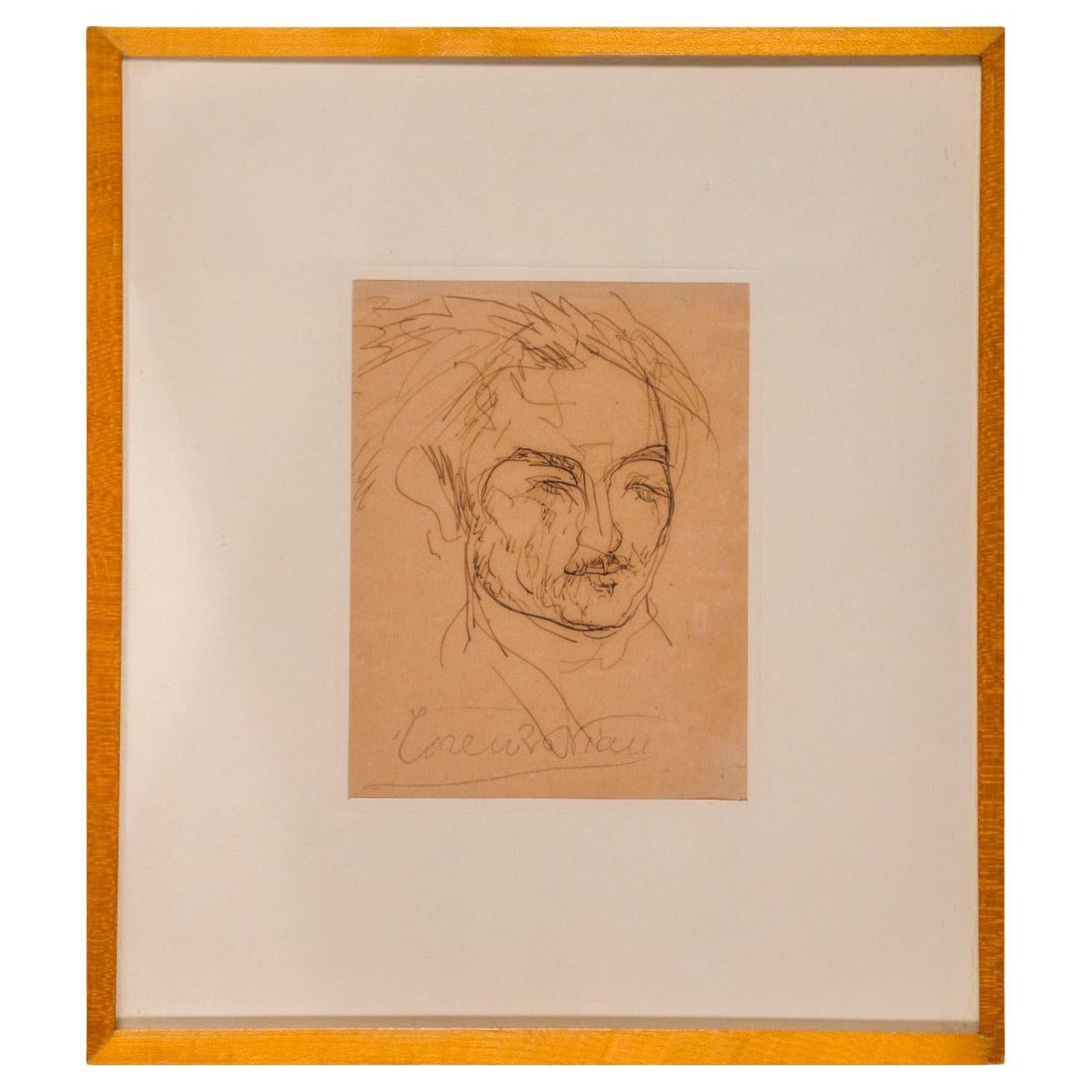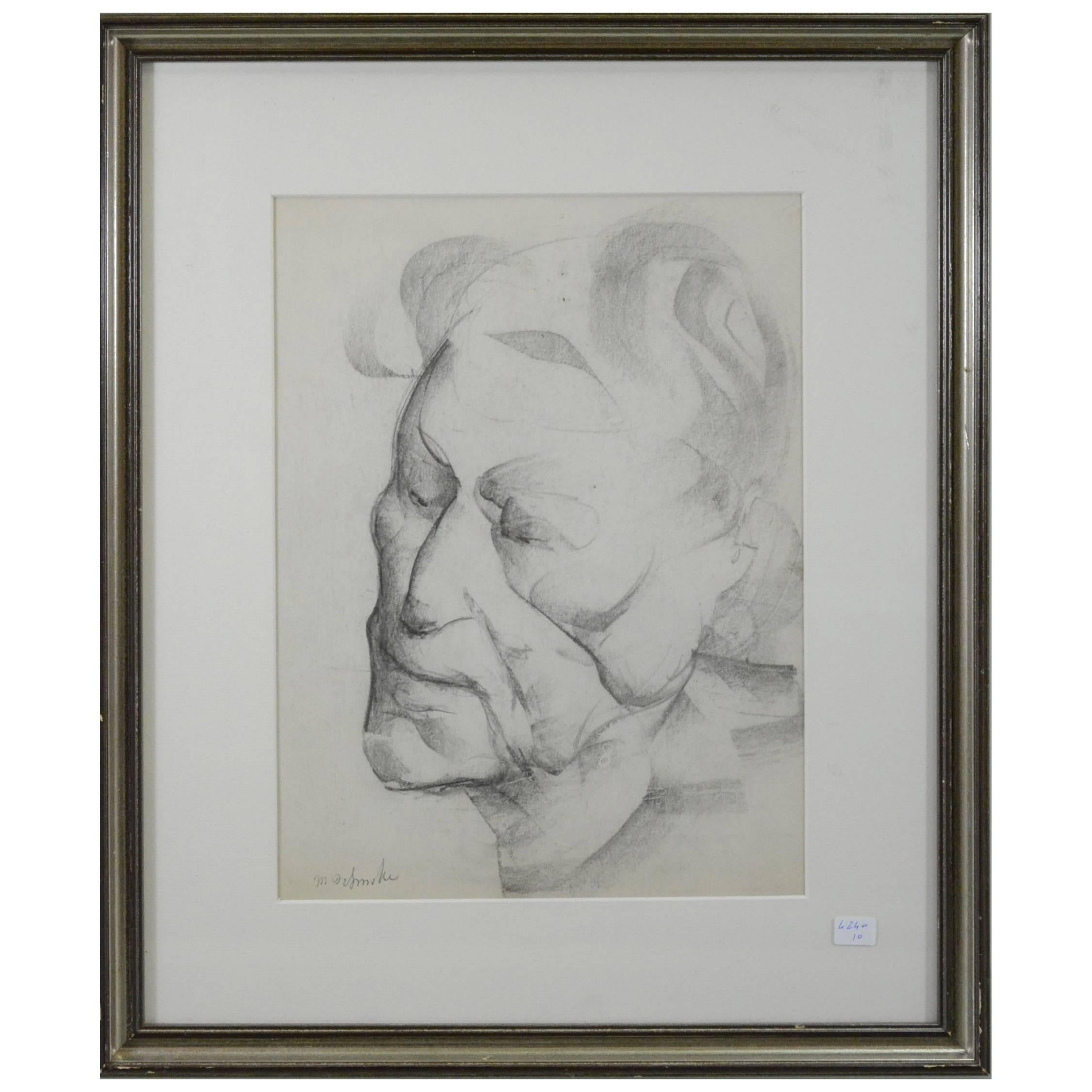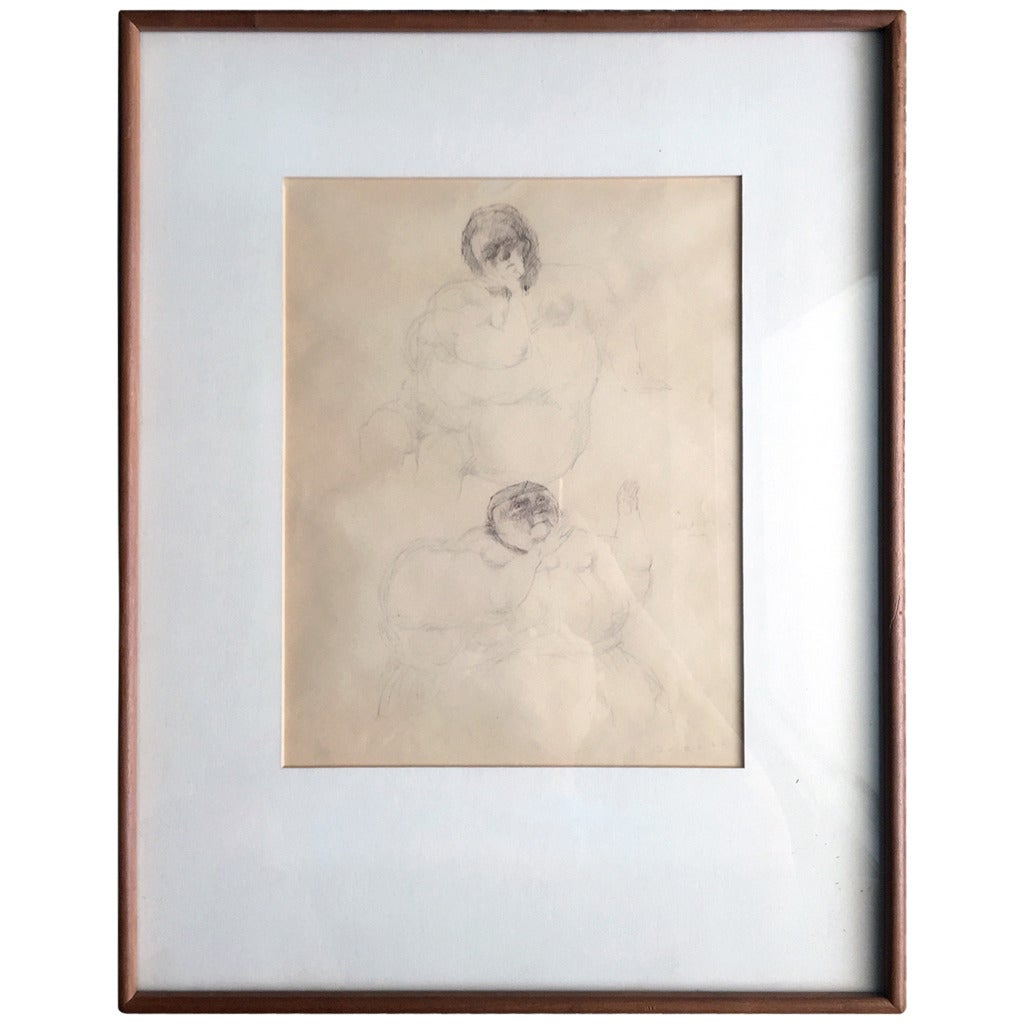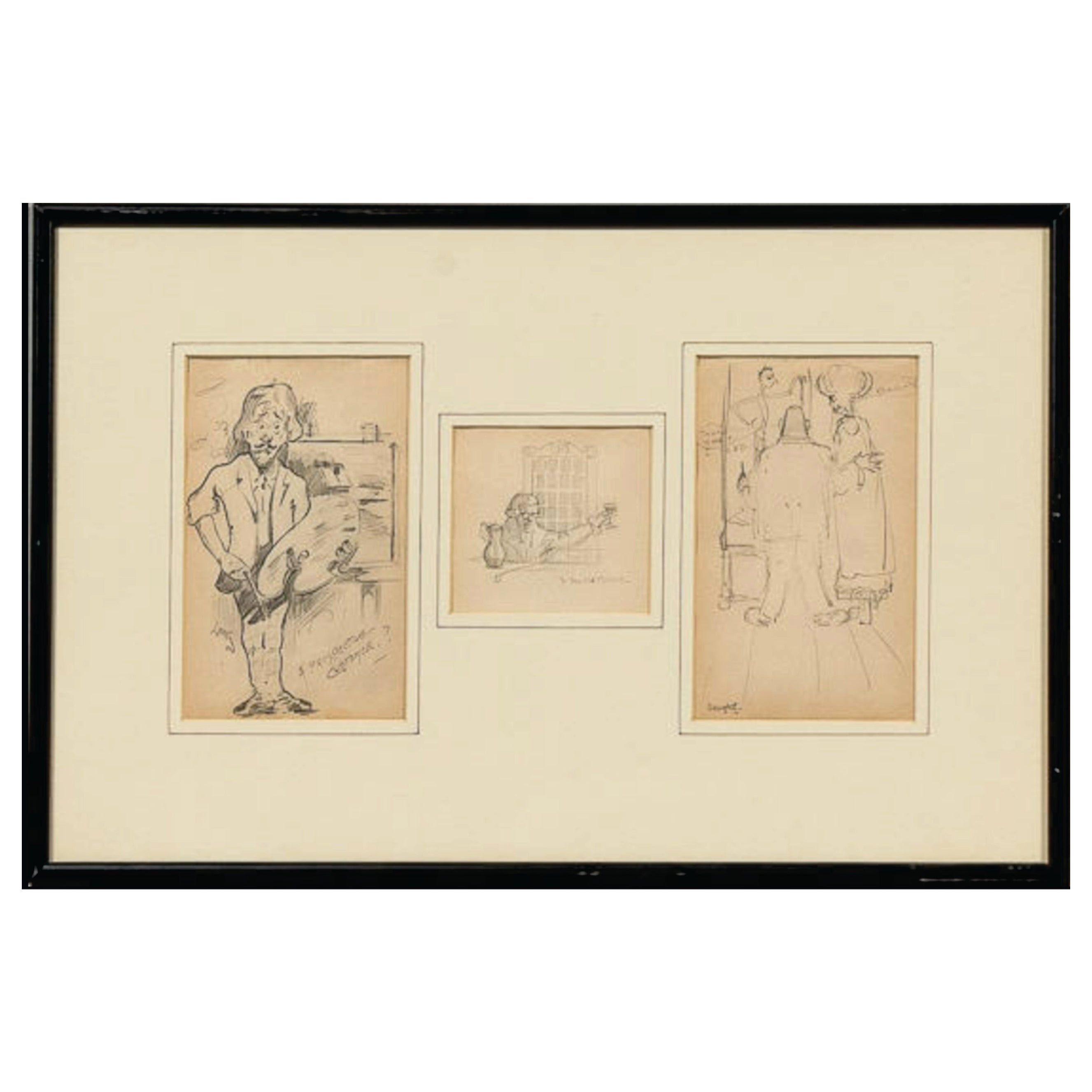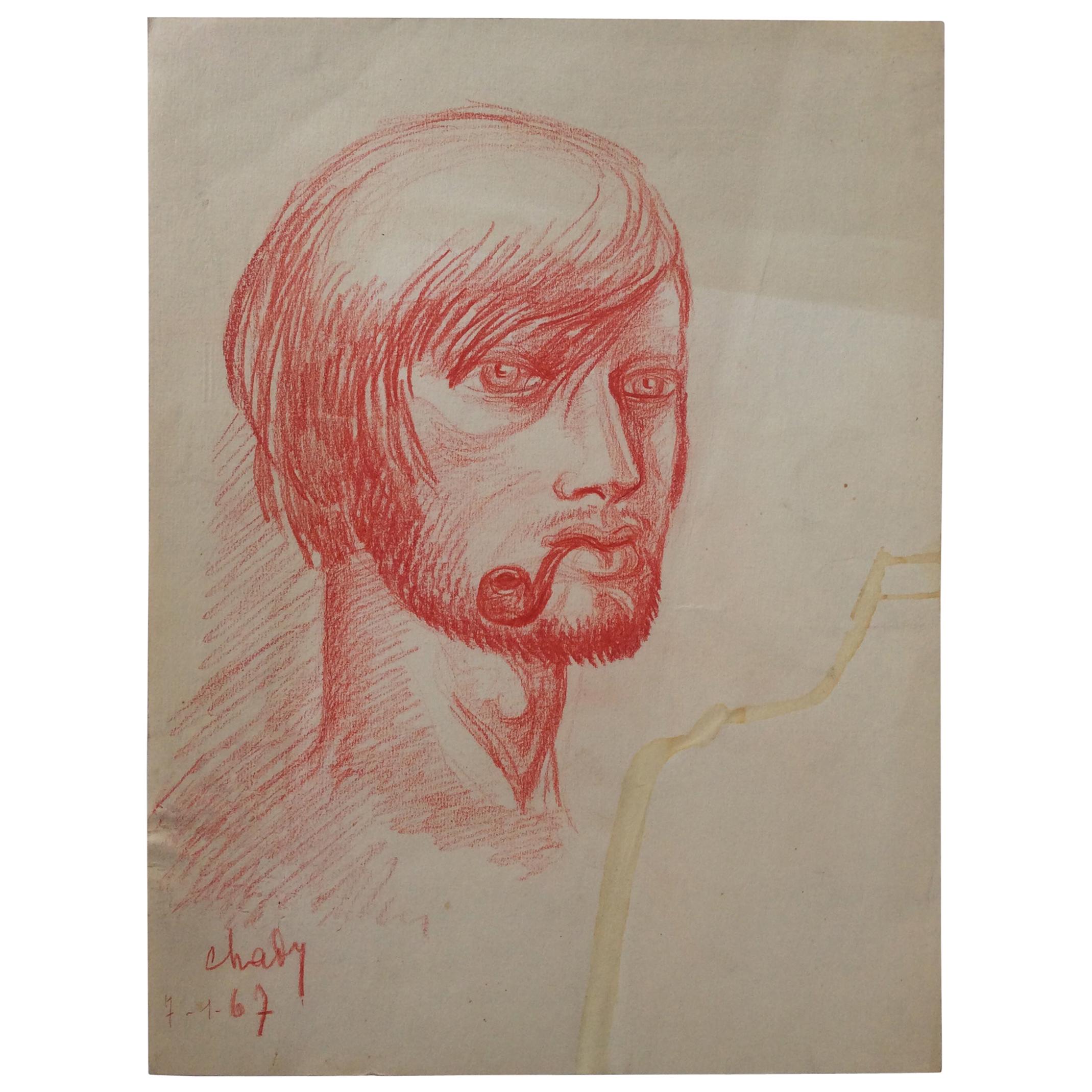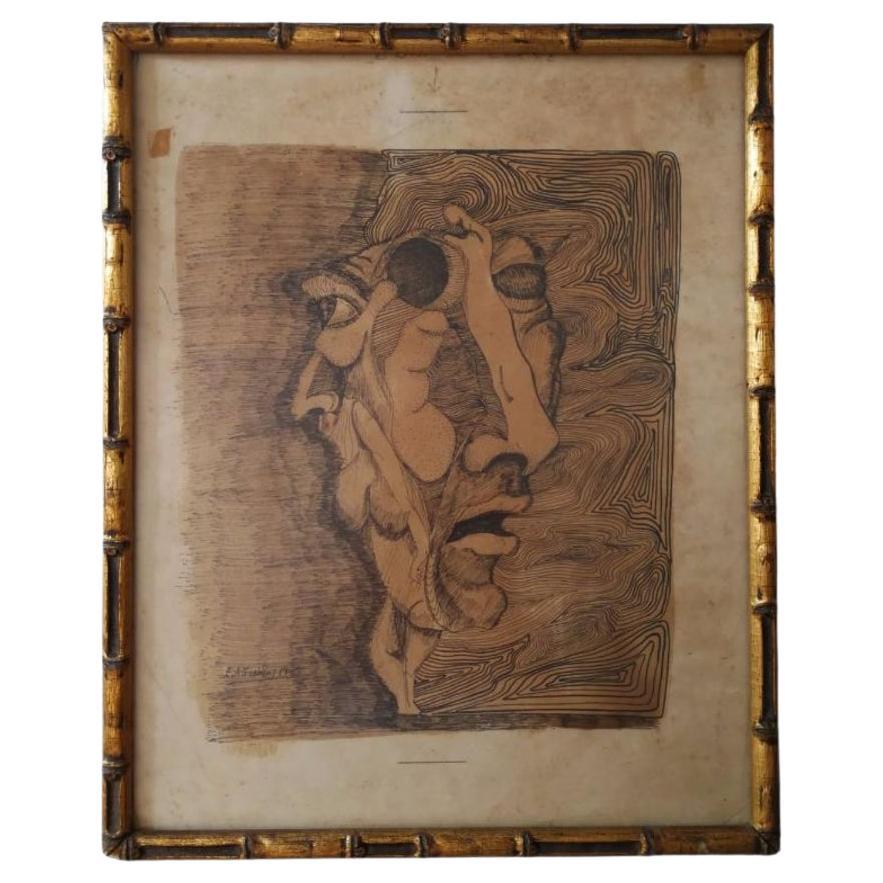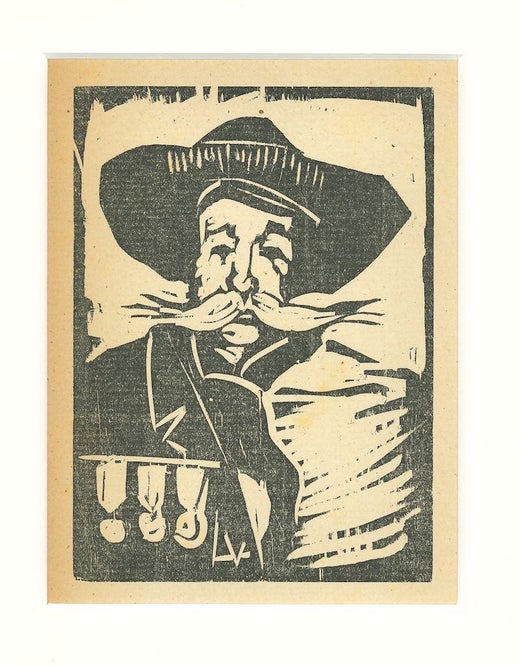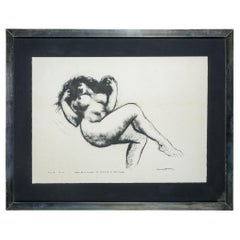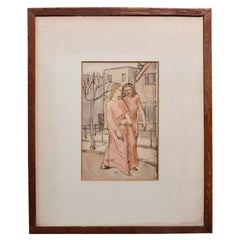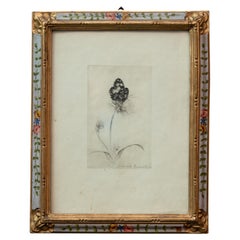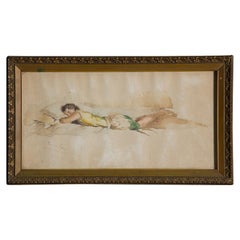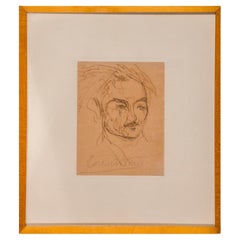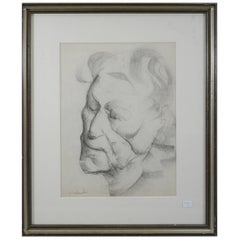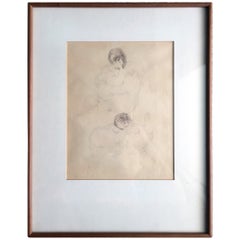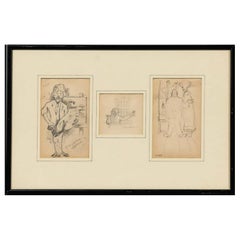Items Similar to 1920s Italian Signed Drawing Portrait
Want more images or videos?
Request additional images or videos from the seller
1 of 6
1920s Italian Signed Drawing Portrait
$1,431.56
£1,058.23
€1,200
CA$1,985.64
A$2,164.78
CHF 1,143.83
MX$26,621.75
NOK 14,222.61
SEK 13,388.70
DKK 9,137.38
About the Item
Rare and important pencil drawing by one of the most important Italian Avangarde Lorenzo Viani.
It represent one of his typical subject: the portrait of the people of Viareggio, his wonderful Tuscan city.
This artwork, never before on the market, comes from an important private collection and is beautified by an original frame in natural wood, in almost perfect condition.
Every item of our Gallery, upon request, is accompanied by a certificate of authenticity issued by Sabrina Egidi official Expert in Italian furniture for the Chamber of Commerce of Rome and for the Rome Civil Courts.
The painting is also protected by glass
Active in Viareggio in the first half of the 20th century, he is regarded as one of the greatest exponents of Italian expressionism.
Lorenzo Viani was born in Viareggio on 1 November in Via della Fornace where he spent his childhood between the docks and the palace.
He attended primary schools, but only up to the third grade
In 1893, he was put to work in the workshop of barber Fortunato Primo Puccini, where he met painter Plinio Nomellini, who had a positive influence on his artistic maturation, and on his advice, he enrolled at the Academy of Fine Arts in Lucca.
In 1904, he was admitted to the Free School of Nude at the Academy of Fine Arts in Florence.
Returning to Viareggio, he settled in Torre del Lago and joined the 'Compagnia della Bohème' and during this period Viani exhibited some drawings at the 7th Venice Biennale and at the National Exhibition of Humour Art in Messina.
In early 1908 he went to Paris, where he visited the Van Gogh retrospective at the Galerie Bernheim-Jeune. After a short stay in the Fleury house, he lived in la Ruche, rue Dantzig.
He made a second trip to Paris and returned to Italy in May 1913, establishing new friendships in the Futurist milieu of “Lacerba”, in particular with Giovanni Papini, Giuseppe Ungaretti, Giosuè Borsi and Ottone Rosai.
In February 1915 Viani supported Cesare Battisti during a tumultuous rally at the Politeama in Viareggio and exhibited ten woodcuts at the III Roman Secession.
Between October and November he exhibited 624 works at the Palazzo delle Aste in Milan with the support of Francesco Ciarlantini.
The exhibition started in a worldly setting and was warmly received by the public and critics.
In 1916, he was called up for war, participating in various war exploits and was discharged in 1919.
In consideration of his artistic merits, he was awarded the teaching of ornamentation at the Istituto d'arte oggi Passaglia in Lucca.
In 1927, the Monumento ai Caduti per la Patria “I Galeottus” (Monument to the Fallen for the Homeland) was inaugurated in Viareggio, an absolutely innovative work of extraordinary expressiveness.
In 1928, he exhibited 11 works at the 16th Venice Biennale and a large selection of his production at Villa Paolina in Viareggio.
In this exhibition, presented by Margherita Sarfatti, the Great Dormitory, a summa of all the characters glimpsed or frequented at the Ruche, was exhibited.
He became an artist known throughout Italy and his exhibitions were an essential meeting place for a cultured and international public.
During this period he painted Georgica (or The Works of the Sea, the Cycle and the Earth) and participated with great success in the 17th Venice Biennale with Georgica and Veliero, as well as in various Futurist evenings: his solo exhibition at Villa Paolina in Viareggio was inaugurated with a speech by Marinetti.
Viani exhibited Il volto santo (now in the Viareggio Municipal Museum) at the I Quadriennale in Rome in 1931.
He worked with great fervour on panels for the Viareggio railway station, had a solo exhibition at the Galleria Ferroni in Florence and at the inauguration of the Viani Gallery in the house in Fossa dell'Abate (today's Lido di Camaiore), which he inherited from his wife.
His poor health did not prevent him from exhibiting at the 19th Venice Biennale, in Viareggio, Lucca, at the 2nd Quadriennale in Rome and at the Lyceum in Florence.
In 1936, he was commissioned to paint a series of marine-themed paintings for the “IV Novembre” College in Ostia and, after several days of non-stop frenetic work, he was unable to attend the inauguration.
Viani was an extraordinary and exemplary figure of the cultural and intellectual flowering that characterised Tuscany and all of Italy at the turn of the 19th and 20th century.
Dimensions are frame included
Under existing legislation, any artwork created over 70 years ago by an artist who has died can requires a license for export regardless of the work’s market price. The shipping may require additional handling days to require the license according to the destination of the artwork.
- Creator:Lorenzo Viani (Artist)
- Dimensions:Height: 13.67 in (34.7 cm)Width: 12.09 in (30.7 cm)Depth: 0.79 in (2 cm)
- Style:Mid-Century Modern (Of the Period)
- Materials and Techniques:
- Place of Origin:
- Period:
- Date of Manufacture:1925 ca.
- Condition:Wear consistent with age and use. Minor fading.
- Seller Location:Roma, IT
- Reference Number:1stDibs: LU4827244298652
Lorenzo Viani
Active in Viareggio in the first half of the 20th century, he is regarded as one of the greatest exponents of Italian expressionism. Lorenzo Viani was born in Viareggio on 1 November in Via della Fornace where he spent his childhood between the docks and the palace.
He attended primary schools, but only up to the third grade In 1893, he was put to work in the workshop of barber Fortunato Primo Puccini, where he met painter Plinio Nomellini, who had a positive influence on his artistic maturation, and on his advice, he enrolled at the Academy of Fine Arts in Lucca.
In 1904, he was admitted to the Free School of Nude at the Academy of Fine Arts in Florence.
Returning to Viareggio, he settled in Torre del Lago and joined the 'Compagnia della Bohème' and during this period Viani exhibited some drawings at the 7th Venice Biennale and at the National Exhibition of Humour Art in Messina.
In early 1908 he went to Paris, where he visited the Van Gogh retrospective at the Galerie Bernheim-Jeune. After a short stay in the Fleury house, he lived in la Ruche, rue Dantzig. He made a second trip to Paris and returned to Italy in May 1913, establishing new friendships in the Futurist milieu of “Lacerba”, in particular with Giovanni Papini, Giuseppe Ungaretti, Giosuè Borsi and Ottone Rosai. In February 1915 Viani supported Cesare Battisti during a tumultuous rally at the Politeama in Viareggio and exhibited ten woodcuts at the III Roman Secession. Between October and November he exhibited 624 works at the Palazzo delle Aste in Milan
He became an artist known throughout Italy and his exhibitions were an essential meeting place for a cultured and international public. During this period he painted Georgica (or The Works of the Sea, the Cycle and the Earth) and participated with great success in the 17th Venice Biennale with Georgica and Veliero, as well as in various Futurist evenings: his solo exhibition at Villa Paolina in Viareggio was inaugurated with a speech by Marinetti. Viani exhibited Il volto santo (now in the Viareggio Municipal Museum) at the I Quadriennale in Rome in 1931.
He worked with great fervour on panels for the Viareggio railway station, had a solo exhibition at the Galleria Ferroni in Florence and at the inauguration of the Viani Gallery in the house in Fossa dell'Abate (today's Lido di Camaiore), which he inherited from his wife. His poor health did not prevent him from exhibiting at the 19th Venice Biennale, in Viareggio, Lucca, at the 2nd Quadriennale in Rome and at the Lyceum in Florence. In 1936, he was commissioned to paint a series of marine-themed paintings for the “IV Novembre” College in Ostia and, after several days of non-stop frenetic work, he was unable to attend the inauguration.
Viani was an extraordinary and exemplary figure of the cultural and intellectual flowering that characterised Tuscany and all of Italy at the turn of the 19th and 20th century.
About the Seller
5.0
Gold Seller
Premium sellers maintaining a 4.3+ rating and 24-hour response times
Established in 2005
1stDibs seller since 2019
94 sales on 1stDibs
Typical response time: 1 hour
- ShippingRetrieving quote...Shipping from: Rome, Italy
- Return Policy
Authenticity Guarantee
In the unlikely event there’s an issue with an item’s authenticity, contact us within 1 year for a full refund. DetailsMoney-Back Guarantee
If your item is not as described, is damaged in transit, or does not arrive, contact us within 7 days for a full refund. Details24-Hour Cancellation
You have a 24-hour grace period in which to reconsider your purchase, with no questions asked.Vetted Professional Sellers
Our world-class sellers must adhere to strict standards for service and quality, maintaining the integrity of our listings.Price-Match Guarantee
If you find that a seller listed the same item for a lower price elsewhere, we’ll match it.Trusted Global Delivery
Our best-in-class carrier network provides specialized shipping options worldwide, including custom delivery.More From This Seller
View AllFrancesco Messina Italian Signed Modern Work on Paper
By Francesco Messina
Located in Roma, IT
Beautiful lithograph by the great postwar Italian artist Francesco Messina.
Depicts in a beautiful pose a nude of a woman "Lying Model"
Very rare "Artist's Proof Hors Commerce" with ...
Category
Mid-20th Century Italian Mid-Century Modern Prints
Materials
Glass, Wood, Paper
Carlo Carrà Credited Italian Art Deco Picture
Located in Roma, IT
1930s colored drawing inscribed on the back "Promenade"
This important drawing we can very likely attribute to the Italian master Carlo Carrà.
The beauti...
Category
Vintage 1920s Italian Art Deco Drawings
Materials
Wood, Paper
20th Century Signed Still Life Pencil Drawing
Located in Roma, IT
Beautiful, evocative Pencil Drawing
Still Life with Flowers and Butterfly
Early 20th century
Signed at lower right
The painting is embellished by a beautiful nineteenth-century la...
Category
Vintage 1920s Italian Art Nouveau Paintings
Materials
Wood, Paper
Young Woman Portrait by Enrico Crespi Signed Located Dated Italian Watercolor
Located in Roma, IT
Beautiful and evocative watercolor technique painting by the great Milanese school artist Enrico Crespi
It depicts a young woman lying dreamily on her bed.
Most likely this is a youn...
Category
Vintage 1920s Italian Art Deco Paintings
Materials
Wood, Paper
Umberto Mastroianni 1960s Original Etching
By Umberto Mastroianni
Located in Roma, IT
Beautiful black and white lithograph by the great 20th century Italian artist Umberto Mastroianni.
This work best represents the work of one of the greatest artists of the European a...
Category
Vintage 1960s Italian Mid-Century Modern Prints
Materials
Wood, Paper
$1,010 Sale Price
35% Off
Giorgio de Chirico 1960s Original Signed Lithography
By Giorgio De Chirico
Located in Roma, IT
Lithograph with golden yellow background
Signed in pencil lower left ‘P d A’ Artist's proof
Signed in pencil lower right ‘G. De Chirico’
Inscribed in the centre in pencil ‘Bucintoro...
Category
Mid-20th Century Italian Mid-Century Modern Prints
Materials
Wood, Paper
You May Also Like
1920s Italian Signed Drawing Portrait
By Lorenzo Viani
Located in Roma, IT
Rare and important pencil drawing by one of the most important Italian Avangarde Lorenzo Viani.
It represent one of his typical subject: the portrait of the people of Viareggio, his ...
Category
Early 20th Century Italian School Portrait Drawings and Watercolors
Materials
Paper, Pencil
Marcel Delmotte, Drawing, Signed
By Marcel Delmotte
Located in Saint-Ouen, FR
Marcel Delmotte (1901-1984) , drawing , signed
Measures: 31 x 23 cm
and 46 x 38 cm.
Category
Vintage 1950s Belgian Baroque Drawings
Materials
Paper
Framed Drawing by Mexican Artist José Luis Cuevas
By José Luis Cuevas
Located in Atlanta, GA
Pencil drawing on paper by José Luis Cuevas (Mexican, b.1934). Entitled "La Esperanza". The work is signed right center and dated 20 Dic. 60 lower right, Silvan Simon Gallery label and inscribed title verso. Sight is 11" by 8.5". With frame is 15" by 19".
José Luis Cuevas was a prominent member of the Generación de la Ruptura (Breakaway Generation), who first challenged the then dominant Mexican muralism movement. He remains a distinguished and controversial artist who is known for depicting the darker side of life and the debasement of the human society with often shocking images. He is also known for being an advocate against creating art purely for commercial gain.
Provenance: this group of the work on paper by Cuevas is from a collection purchased in 60s from Silvan Simone Gallery, Los Angles, CA. The The Silvan Simone Gallery was founded in 1958 by Silvan Simone, an former co-owner of the Florentine Gallery in Pacific Palisades. Between 1959 and 1967, the gallery showed artists such as Lee Mullican, Gordon Wagner...
Category
Vintage 1960s Mexican Modern Drawings
Materials
Paper
Antique 3 Drawings by a Boston Artist, Signed Early 20th Century, D3
Located in Norton, MA
3 Drawings by a Boston Artist, Signed Early 20th Century, D3
Three drawings of figures, two 7.75" x 4.75", and one 4.25" x 4.25", were drawn in the early 20th century, Framed (22.5" ...
Category
Antique 18th Century American Paintings
Materials
Canvas, Wood
Midcentury Original Portrait Drawing Signed Chady Dated 1967
By Chady
Located in Miami, FL
Very handsome original portrait drawing signed Chady, dated 1967.
This interesting piece of art resembles Vincent van Gogh's self portrait.
Measur...
Category
20th Century French Mid-Century Modern Drawings
Materials
Paper
$220 Sale Price
20% Off
Original work by Eduardo Gualdoni 1975
Located in Benalmadena, ES
One of the first works of the great artist Eduardo Gualdoni made in 1975.
Mixed technique
Frame dimensions: 36 x 29 cm
Category
Vintage 1970s Drawings
Materials
Paper
$765 Sale Price
20% Off
More Ways To Browse
Henry Long
Italian Oil Painting Pair
Knights Templar
Large Botanical Prints
Leather Writing Slope
Medieval Panel
Mid Century Enamel Tray
Mid Century Modern Bistro Table
Mughal Paintings
Mut Design
Neutra Richard
New Mexican Furniture
Octagonal Plinth
One Sheet Movie Posters
Painted Birds On Furniture
Paolo Veronese
Peasant Girl
Scalloped Edge Bowl
